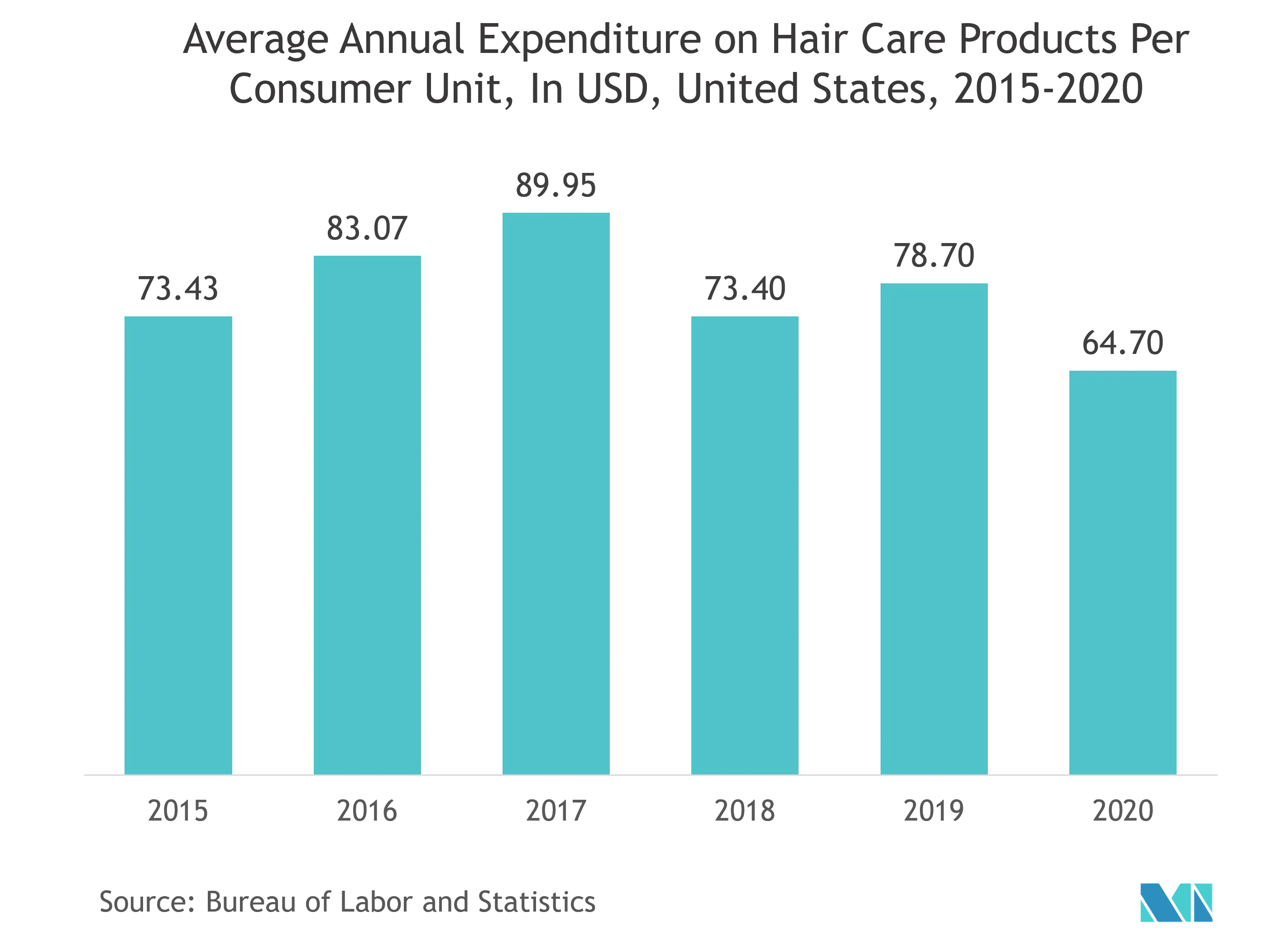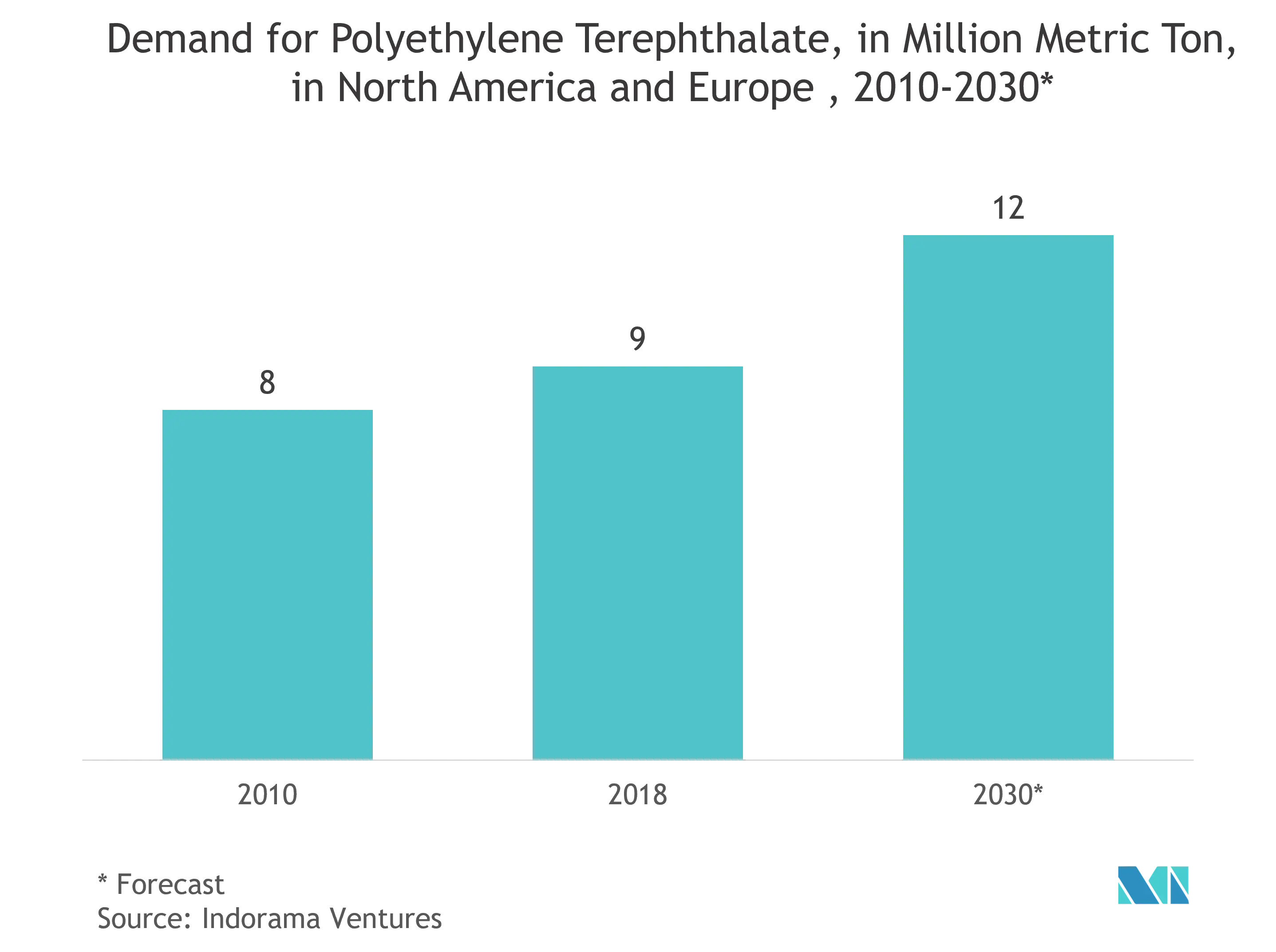Market Trends of NA Personal Care Packaging Industry
This section covers the major market trends shaping the North America Personal Care Packaging Market according to our research experts:
Haircare Will Observe a Significant Growth
- Haircare brands use packaging to their advantage, both in the salon and beyond. Haircare for the retail segment is highly competitive, and hair care brands are relying on packaging differentiation to forge a connection with consumers. After skincare, hair care commands a significant share of the cosmetic market.
- Most hair care brands experiment with the interplay of matte and gloss printing techniques and are increasingly incorporating sensory elements into their packaging. The use of treatment oils for added heat styling protection, imparting shine, or decreasing frizz has led to the increased use of dropper packaging as a dosing and precision application method.
- Oribe Hair Care, based in New York, recently cultivated a distinctive shelf presence with its angularly lined, boldly-hued, custom packaging since its inception. The brand also has innovative packaging, which blends old-world intricacy with sleekly modern engineered elegance, and all the bottles, upright tubes, and sophisticated jars deliver a cohesive display suggestive of perfume bottle silhouettes.
- Companies dedicated to the development of shampoos and hair care products have also been looking to expand into retail stores to maximize any possible revenue. For instance, in November 2021, Olaplex Holdings, Inc. formed a distribution partnership with Ulta Beauty Salons, designed around increasing retail channels for their products by using the salons as stores. The Company's retail products will be available in more than 1,250 Ulta stores and on ulta.com from January 2022.
- Many hair care brands are entering into partnerships to provide better packaging alternatives. Companies are increasingly engaging in refilling initiatives that encourage consumers to bring back their bottles and refill them at a subsidized price, compared to if they would have purchased the product independently. In October 2020, P&G Beauty announced its first-ever refillable aluminum bottle system to launch at-scale, with its Head & Shoulders, Pantene, Herbal Essences, and Aussie brands in Europe. The refill system uses a new reusable 100% aluminum bottle and recyclable refill pouch, made using 60% less plastic (per mL versus standard brand bottle). It is expected to pave the way in changing the way consumers buy, use and dispose of their shampoo bottles.

Plastic to Hold Major Market Share
- Plastic is a prominent material in personal care product packaging due to its low cost, lightweight, flexibility, durability, and other factors. For personal care products, plastics are a material of choice for manufacturing shatterproof and 'no-spill' bottles, jars, tubes, caps, and closures.
- According to the Packaging Machinery Manufacturers Institute (PMMI), at 61% market share, plastic packaging, such as bottles, jars, compacts, and tubes, dominate in beauty and other personal care products, where bottles are the most commonly used containers, accounting for 30% of the market.
- Personal care product bottles produced from HDPE are the most common and least expensive, which are economical, impact-resistant, and maintain a good moisture barrier. Lotion bottles come in all different shapes, sizes, and forms, whereas some lotions are kept in capped tubes. These tubes are usually made from plastic, depending on their size. However, there are lotion bottles that are also made of plastic, but instead of the capped tops, they have pump dispensers. This is helpful for many people who do not want to have to screw a top on and off or not want to flip up a cap.
- Gerresheimer Plastic Packaging, which is committed to environmental concerns, offers PET ranges with different mixtures of post-consumer recycled materials. It can produce cosmetic bottles made of up to 100% R-PET. Besides using recycled materials, Gerresheimer is also motivated to help its customers reduce greenhouse gas emissions by using biomaterials. Biomaterials are renewable alternatives to conventional PE/PET. Sugarcane is one of the substances used to make biomaterials, where ethanol is taken from the sugarcane plant, and after converting into green ethylene, it goes to the polymerization plants, where it is converted into green PE/PET.
- Moreover, to fully eliminate the use of virgin plastic, companies are exploring other materials, including bioplastic made primarily from sugarcane, which will very soon provide viable alternatives to virgin petro-based plastics.

